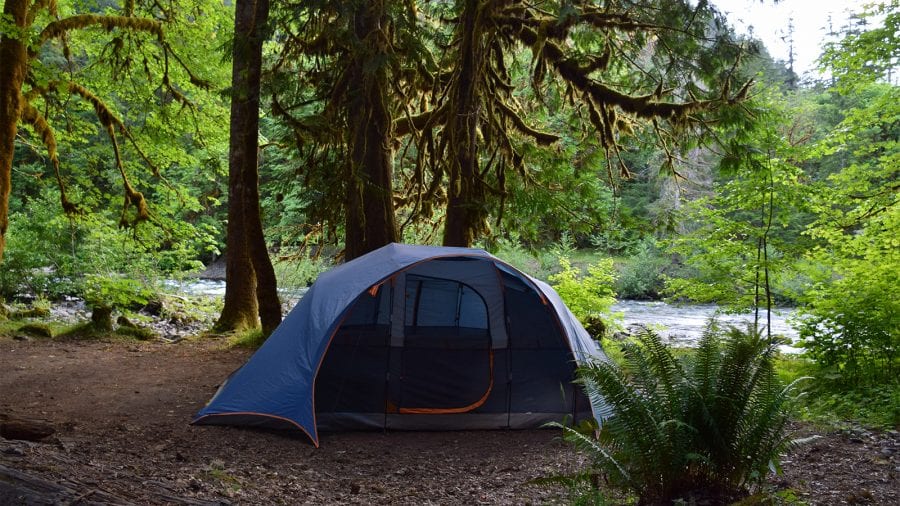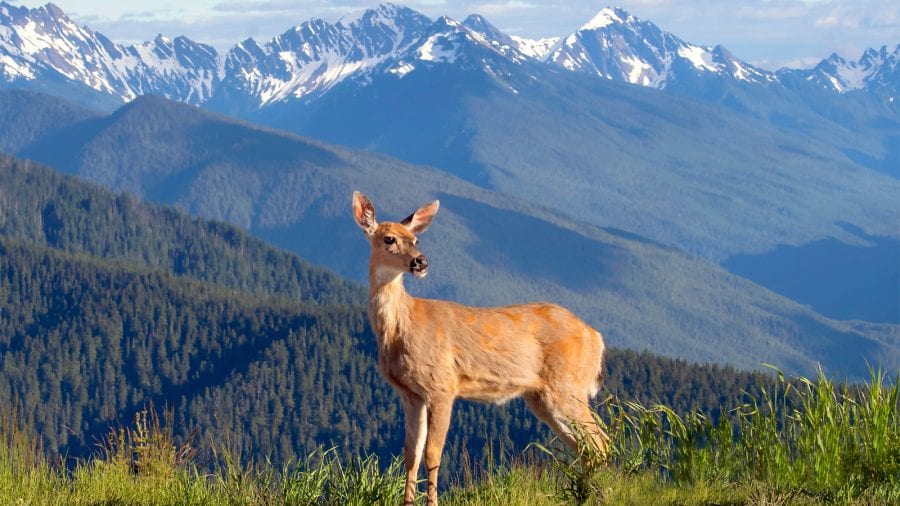The best time to visit Olympic National Park is in July and August when the weather is at its best.
The weather is usually warm with temperatures in the mid-70s during midday. All the facilities and roads are open. This summer period sees the highest influx of tourists.
Page Contents
May to June
The weather can still be erratic even if it starts to warm up in the late spring. At the higher elevations, it may snow or rain often and even last into June.
This time of year is the second busiest at Olympic National Park as the seasonal campgrounds begin to open.
July to August
July and August are the peak months at Olympic National Park. The temperatures are in the 60s and 70s with occasional rain and thunderstorms, especially on higher elevations.
There is a wide selection of ranger-led activities, including astronomy programs at Hurricane Ridge and guided treks in the Hoh Rainforest.
September to October
Fall brings a drop in temperature as well as more snow and rain. Snow can fall in the high country as early as late September.
While this is happening, it begins to get cold in the mountains. Certain highways and campgrounds close during this period in preparation for the winter.
November to April
November to April are the wettest period at Olympic National Park with the coast and rainforest receiving up to 140 inches of rain.
At lower elevations, temperatures range from chilly to mild, but they can occasionally drop below freezing. Snow is plentiful at the higher elevations. Hurricane Ridge offers weekend skiing when suitable weather averages 30 to 35 feet of snowfall. In the winter, rangers also give snowshoe tours through Hurricane Ridge.
What’s on :
- National Park Week (April)
Best time for good weather

The best time for good weather in Olympic National Park is from July and August.
A significant part of the reason for the preservation of the land on the Olympic Peninsula is to prevent deforestation in the temperate Hoh Rainforest.
The region receives an average of 150 inches of rainfall throughout the year. These two months experience much less rainfall on average than any other month. However, it is still a good idea to bring rain gear on your trip to this National Park.
The winters are long in this area, and the snow can stick around for long periods in the higher elevations. July and August give you the best likelihood that snow will not impede your trip and the parts of the park you want to visit.
Best time for camping

The best time for camping in Olympic National Park is from May through October.
During the earlier and later parts of the season, if you camp in higher elevations, you might want to watch for snow on the weather forecast.
Camping for more than a night or two in the park will almost guarantee that you might put up with the rain. Before going on your trip, use tent waterproofing spray on your gear to keep yourself dry. If the winter is hanging on, consider a tent heater to stay warm.
Read More : Best Campgrounds in Olympic National Park
Best time for hiking

The best time for hiking in Olympic National Park is from May through September.
In the high country, you are likely to begin getting snowfall starting in September. If you decide to take a hiking trip at the beginning or end of the season, bring a winter jacket and winter boots to prepare you for the colder weather and snow.
Otherwise, there are extensive hiking trails that you can use in the lower elevations of the park that are in a more temperate climate.
Read More : Best Hiking Trails in Olympic National Park
Best time to avoid crowds

The best time to avoid crowds in Olympic National Park is October to December.
The rate of tourism falls steeply during these months even though there are plenty of things to do in the park during the winter. It can be more difficult to navigate around the park during the winter months, though, since the snow piles high enough to close some of the roads in higher elevations.
If you want a chance to see snowcapped mountains or winter storms on the beach on your own, the best chance to do so is during the winter months.
Best time to see wildlife

The best time for seeing wildlife in Olympic National Park is from March until June.
These months see wildlife coming out for the first time and more excited about the warmer weather. They might also be less skittish during these earlier months since they are less accustomed to people walking through the park and in the forests.
There are many different types of wildlife you have the opportunity to see in this park since there are ocean areas and areas of high elevation. You can whale watch during spring or check out the tidepools at any time of the year.
Bring your binoculars if you want a chance to see some of the more elusive birds and mammals.
Best time for stargazing

The best time for stargazing in Olympic National Park is from November through February.
Areas in higher elevations are also preferable since they are typically more clear at night.
The area can be extremely foggy, and the cold weather helps to crystallize the moisture in the air instead of letting it hang and create a mist over the night sky. Olympic National Park is not known for its stargazing due to the rainy and misty weather patterns.
Best time for tide-pooling

The best time for tide-pooling in Olympic National Park is from March to September.
These warmer periods of the year bring plenty of marine life to the shore. Early in this season is also when the whales begin to migrate, and there is a chance you can view them from shore.
Some of the animals that you should watch out for include rock crabs, sea stars, pricklebacks, wolf eels, barnacles, brittle stars, sea snails, and clams. Always be careful when going tide-pooling since the tide coming in and out can be dangerous and trap you in some of the more remote areas of these beaches.
Best time for fishing

The best time for fishing in Olympic National Park is between December and January.
The Department of Fish and Wildlife reports that the best time to catch steelhead is during these months.
The best time of the year also depends on what kind of fishing you prefer. Fly fishing is easier to do during the late spring into early fall. It can be very cold in the higher elevations otherwise, and the fish bite less often.
Before going, check out the catch record reports for the species of fish you are interested in catching. These are put out by the Department of Fish and Wildlife each year.
Best time for boating

The best time for boating in Olympic National Park is from May to September.
Boating has become an incredibly popular activity in the National Park since there are rivers that connect to the ocean and allow for excellent adventuring opportunities.
There are many areas that allow you to rent kayaks, canoes, and white water rafts during the summer. It depends on where you want to go for the most appropriate watercraft.
Best time for snowsports

The best time for snowsports in Olympic National Park is from November to February.
The season can also extend further depending on how high in elevation you travel in the park.
The average amount of snowfall across the Olympic Peninsula that accumulates is about 14.5 inches. However, depending on the winter, the higher elevations, like Hurricane Ridge, can record up to 35 feet of snow each year.
Amanda Williams
Amanda Williams is a writer, plant-nerd, and outdoor enthusiast. She has traveled extensively, around the U.S., throughout Asia, Europe, and Latin America. Everywhere she treks, she takes time to enjoy the outdoors. John Muir is her hero. She aspires to inspire people to live better as he did.


